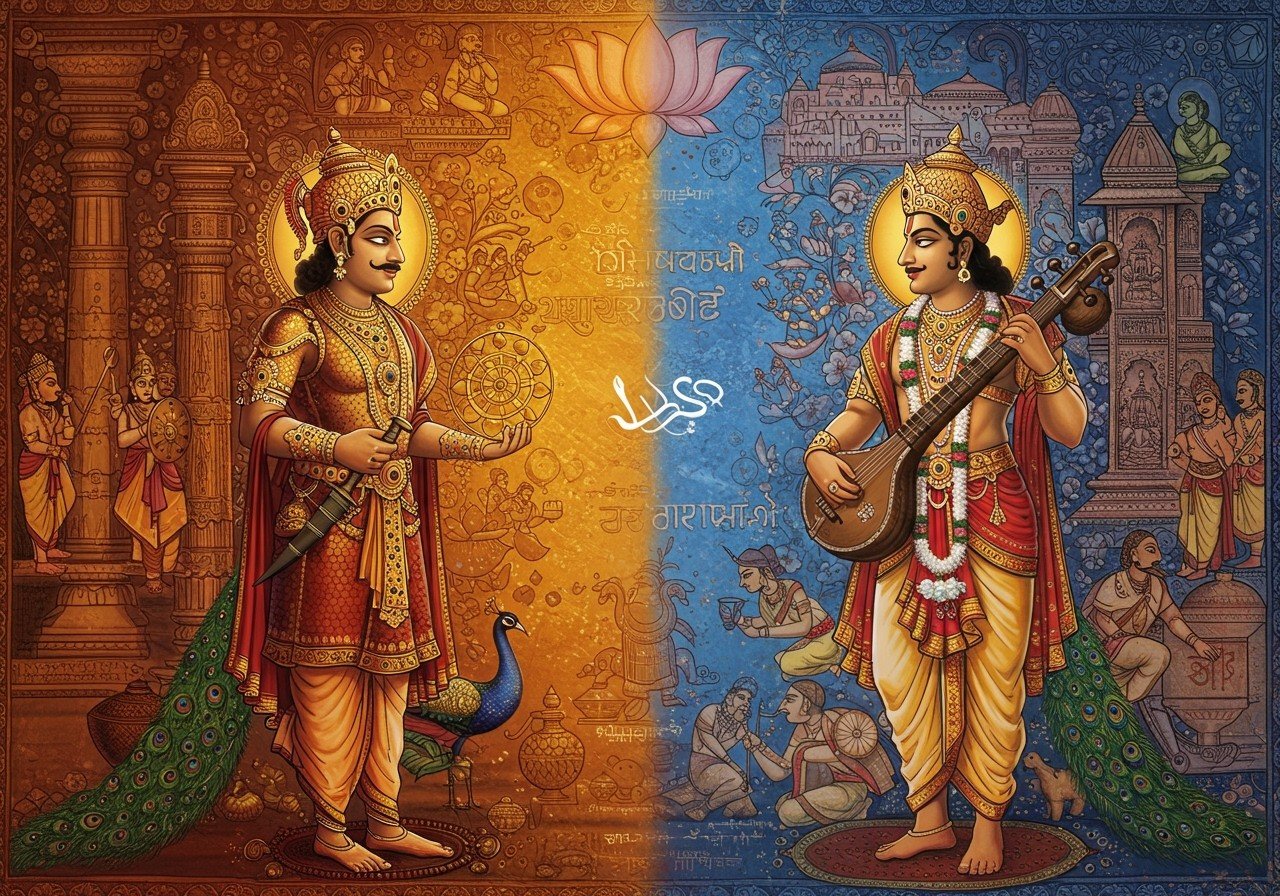
Ancient Indian dynasties have shaped the cultural, political, and spiritual landscape of the subcontinent. This comparative study focuses on the Maurya and Gupta empires, two of the most influential dynasties in ancient India (The Mauryan Empire (321-185 BCE) and the Gupta Empire (c. 319-550 CE)). We will explore their political structures, cultural contributions, economic strategies, and spiritual practices to understand their enduring legacy.
Political Structures and Governance
The Maurya dynasty, founded by Chandragupta Maurya in 321 BCE, was known for its centralized administration and bureaucratic governance. The Arthashastra, attributed to Chanakya (Kautilya), provides insights into their administrative policies and political strategies. Ashoka the Great played a key role, embracing Buddhism and impacting governance. The Mauryas maintained a large standing army and ruled from Pataliputra, a center of power and administration.
The Gupta dynasty, founded by Sri Gupta around 319 CE, is often called the Golden Age of India. They fostered advancements in various fields through a relatively decentralized governance system relying on local governance and feudal lords. The Guptas focused on alliances and vassal states and utilized multiple regional capitals.
Economic Strategies and Trade
The Mauryan economy was characterized by state control over trade, agriculture, and industry. State-run factories and mines, along with standardized weights and measures, facilitated trade. Their extensive trade networks connected India to Central Asia, the Mediterranean, and Southeast Asia, with economic policies focused on agrarian expansion and land revenue systems. The Mauryas introduced punch-marked coins.
The Gupta economy thrived on internal trade and Silk Road prosperity, leading to increased urbanization and wealth. They promoted arts and crafts, resulting in flourishing guilds and a diversified economy. The Guptas produced gold coins depicting rulers and deities.
Cultural and Artistic Contributions
The Mauryan period saw significant architectural achievements like stupas, pillars, and rock-cut caves. Ashoka’s patronage of Buddhist art is evident in the Ashokan pillars and the Sanchi Stupa.
The Gupta period is known for its contributions to classical Indian literature, science, and arts. They promoted Hindu art and architecture, exemplified by the Dashavatara Temple in Deogarh. This era witnessed a flourishing of artistic expression and intellectual pursuits.
Spiritual and Religious Practices
Under Ashoka’s reign, Buddhism flourished during the Maurya dynasty. His conversion after the Kalinga War led to the spread of Buddhist teachings through missions and inscriptions. The establishment of Buddhist Sanghas and monasteries marked this era.
The Gupta dynasty saw a revival of Hinduism. They supported the construction of Hindu temples and Vedic rituals. Despite these differences, both periods witnessed the growth of Jainism.
Societal Structures
Mauryan society was highly stratified with state intervention in social affairs. They focused on public welfare with the establishment of hospitals and rest houses (dharamshalas).
The Gupta period, while experiencing a rigid caste system, also saw advanced social organization. Education flourished with institutions like Nalanda attracting scholars from across Asia. This fostered intellectual exchange and the development of new ideas.
Legacy and Influence
The administrative principles of the Maurya empire, as outlined in the Arthashastra, influenced modern Indian governance. The cultural heritage of the Gupta period endures in classical Indian dance, music, and literature.
Ashoka’s Buddhist policies spread Buddhism across Asia, reaching regions like Sri Lanka and China. Gupta scientific achievements impacted later developments in India and the Islamic Golden Age.
FAQs
What were the key administrative features of the Maurya Empire? The Mauryan Empire was known for its centralized administration, bureaucratic system, and the comprehensive legal code outlined in the Arthashastra.
How did the Gupta Empire’s governance differ from the Mauryas? The Gupta Empire adopted a more decentralized approach, relying on local rulers and feudal lords, unlike the Mauryan’s centralized system.
Discover Ancient Dynasty Ritual Items at Poojn.in
Poojn.in offers authentic ritual items that connect you to India’s rich dynastic heritage, reminiscent of the Mauryan and Gupta periods. Our collection includes:
- Copper and brass vessels: Similar to those used in ancient rituals, these handcrafted pieces bring a touch of history to your practices. Explore our collection of copper and brass puja items.
- Traditional incense holders: Inspired by ancient temple designs, our incense holders create a sacred atmosphere for your prayers and meditations. Find the perfect incense holder for your home.
- Pure cotton vastras (ceremonial cloths): Adorned with heritage patterns, these cloths add a touch of tradition to your ceremonies. Discover our selection of ceremonial cloths.
- Handcrafted puja thalis: Reflecting classical Indian metalwork, our puja thalis provide a beautiful and functional centerpiece for your rituals. Learn more about puja rituals and their significance.
- Sacred items for traditional rituals: Sourced with utmost care, our sacred items ensure authenticity and adherence to traditional practices. Explore the history and symbolism of various puja items.
Visit Poojn.in to explore our complete range of ritual items. We offer verified authentic products with detailed descriptions and secure online ordering.


